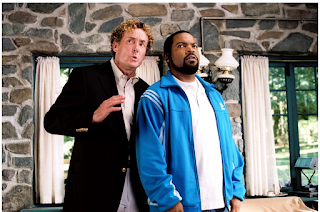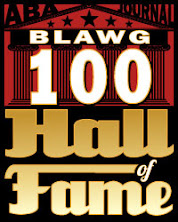Princeton Excess & Surplus Lines Ins. Co. v. R.I. Cranston Entertainment Inc.; 2024 WL 1285631, C.A. No. 21-63-JJM-PAS (D.R.I. Mar. 26, 2024)
Defendant, d/b/a
Wonderland, operated an adult entertainment club and was one of the many such
sued by various models for using their images in advertising without their
consent from 2015 to 2019. Princeton insured Wonderland from 2016-2018 (with a
broad exclusion for defamation, invasion of privacy, and various forms of
advertising injury in the second year called the Exhibitions and Related
Marketing Exclusion), and agreed to defend the club but reserved the right to
deny insurance coverage. After settlement negotiations (including Wonderland’s
separate counsel), Wonderland agreed to a judgment for $1.895 million, with a
covenant not to execute and an assignment of rights against Princeton to the
models in lieu of payment. Princeton then sued Wonderland and the models,
seeking a declaratory judgment that it has no obligations under the Consent
Judgment. Defendants counterclaimed for payment and damages for breach of
contract and bad faith.
If policy terms are
“ambiguous or capable of more than one reasonable meaning, the policy will be
strictly construed in favor of the insured and against the insurer.”
Princeton argued
that (1) no coverage was available for claims during the 2017 to 18 Policy
Period; (2) Wonderland breached the insurance contract by agreeing to the
Consent Judgment in violation of the cooperation and non-assignment clauses;
and (3) the Consent Judgment was unreasonable, and thus unenforceable, as a
matter of law.
The consent judgment
was a lump sum and, Princeton argued, included uncovered claims; most of the images
fell within the 2017-18 period. The policy excluded personal and advertising injury,
including “publication, in any manner, of material that violates a person’s
right of privacy,” disparagement, use of advertising ideas, and trade dress
infringement, if such activities “arise out of or are part of ‘exhibitions and
related marketing,’ ” which are broadly defined.
The underlying claim
alleged false advertising and false association under the Lanham Act,
misappropriation, violation of the Models’ common-law and statutory privacy
rights, and defamation, “all of which fall squarely under Personal and
Advertising Injury. So the burden falls to Princeton to show that its exclusion
is valid.”
The problem was that
the policy and the exclusion were “clearly worded, specific, and directly
contradictory to each other. Under Rhode Island law, policy exclusions must be
unambiguous, and ‘contract provisions subject to more than one interpretation
are construed strictly against the insurer.’” Also, “Rhode Island courts will
not uphold an exclusion that leads to unreasonable results, particularly if
doing so will make another part of the coverage illusory.” The court found that
definition of “Exhibitions and Related Marketing” was so broad as to “preclude
coverage in almost any circumstance.” The Fifth Circuit recently found that,
even if all “advertising injury” was excluded by this exact policy language, “personal
and advertising injury” was an umbrella provision and not illusory because
there was still personal injury coverage. Princeton Excess & Surplus Lines
Ins. Co. v. A.H.D. Houston, Inc., 84 F.4th 274 (5th Cir. 2023); but see Princeton
Express v. DM Ventures USA LLC, 209 F. Supp. 3d 1252, 1258 (S.D. Fla. 2016) (declining
to uphold a “field of entertainment” exclusion on the grounds that it would
exclude “anything listed in (d) through (g) listed under Personal and
Advertising Injuries” and would thus make the Policies illusory as to
advertising coverage).
The court here
disagreed with the Fifth Circuit. By its plain language, “exhibitions”
encompass almost all forms of production and advertising: “motion pictures,
television programs, commercials, web or internet productions, theatrical
shows, sporting events, music, promotional events, celebrity image or likeness,
literary works and similar productions or work ....” including social media, as
well as material produced “in any medium including videos, phonographic
recordings, tapes, compact discs, DVDs, memory cards, electronic software or
media, books, magazines, social media, webcasts and websites”— “a broad-ranging
definition that contradicts Princeton’s purported coverage” for “advertising”
(defined as “a notice that is broadcast or published to the general public ...
about your goods, products or services”). And the exclusion also withdrew
coverage for all related forms of marketing. Rhode Island doesn’t allow
insurers to make whole sections of a policy illusory.
It also didn’t save
Princeton that exceptions purportedly restored coverage for advertising related
to Wonderland’s food and liquor services. Princeton argued that these
exceptions preserve coverage for “use of another’s advertising idea or
infringement of copyright, slogan, or trade dress in an advertisement for any
aspect of Wonderland’s business other than exhibitions or marketing for
exhibitions (such as its food or liquor service).” “But the Exhibitions and
Related Marketing Exclusion precludes coverage for any commercial, web
production, or promotional event, regardless of whether the advertisement
relates to a show, a theatrical performance, or purchase of a hamburger. It
would exclude the advertising examples that Princeton cites to make its case.”
Thus, Princeton owed
Wonderland a duty to indemnify for advertising injury arising out of
Exhibitions and Related Marketing under the 2017 to 18 Policy. Moreover, there
was no evidence that the consent judgment purported to settle claims outside
the policy period; it was based on Princeton’s denial of claims for that
period, and its plain language suggested that it was limited to that period.
The policy didn’t apply
to “[a]ny punitive damages, exemplary damages, or the multiplied portion of any
award, because of any ‘bodily injury’, ‘property damage’ or ‘personal and
advertising injury’.” But again, there was no evidence that the consent judgment
included these.
Princeton argued
that Wonderland breached the terms of the insurance contract by interfering
with its right to defend and settling the case in violation of the cooperation
and non-assignment clauses. But it was uncontested that Princeton knew about
the Models’ offer and took no steps to preserve its rights over the course of
many months, so it waived any objection to the terms of the settlement. Also,
there was a cooperation clause requiring cooperation in investigation and
settlement; this is a reciprocal obligation, and no reasonable jury could look
at Princeton’s conduct and find that it used “reasonable diligence” to obtain
Wonderland’s cooperation.
Finally, Princeton
waived its right to object based on the non-assignment clause:
We think the insured should be allowed, as soon as the insurer denies
coverage, to protect its interest by negotiating a settlement. The only
valuable asset the insured may have is its cause of action against the insurer
and the insured should be able to assign this right to the injured party to
protect itself from further liability.
Also, “because an
insured’s rights to proceeds vests at the time of loss ... restrictions on the
insured’s right to assign its proceeds are generally rendered void.”
Was the consent
judgment collusive and unreasonable and thus unenforceable? No, there was no
evidence of misconduct. (Princeton was bound because the judgment fixed
Wonderland’s liability, triggering the duty to indemnify, and Wonderland
properly assigned its claims to the models.) Princeton pointed to statements
made by Wonderland’s manager, who stated that the offer of $10,000 per model
was “crazy” and was upset that Princeton “did not want to fight it.” It argued
that this was incompatible with Wonderland’s decision to settle all claims for
$1.895 million, and that the manager hadn’t read the consent judgment so
Wonderland could not have truthfully stated that it was reasonable.
“That a party may
have opposed a settlement does not render a settlement fraudulent or collusive.
And a party’s failure to read a contract does not render it unenforceable. A
party may rely on their attorney in drafting settlement documents, and the
attorney can be presumed to speak for them regardless of whether they have read
the documents.” Any concerns about collusion were “further assuaged by the fact
that the judgment was negotiated under the supervision and guidance of a
seasoned Magistrate Judge and that other courts have repeatedly found liability
on similar facts.”
But the complaint included
other policy exclusions that were not yet before the court (exclusions for
knowing falsity and the like), so defendants only got partial summary judgment.
They were entitled to summary judgment
on liability for breach of contract (the duty to indemnify), but not on
damages.


















